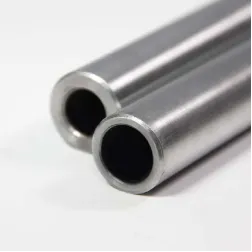-
Cangzhou Yulong Steel Co., Ltd.
-
Phone:
+86 13303177267 -
Email:
admin@ylsteelfittings.com

Nov . 07, 2024 11:24 Back to list
Effective Methods for Cleaning Galvanized Pipes in Various Applications
Cleaning Galvanized Pipes A Comprehensive Guide
Galvanized pipes, known for their durability and resistance to corrosion, have been a popular choice in plumbing, especially in older homes. However, over time, these pipes can accumulate rust, mineral deposits, and other debris, which can hinder water flow and affect water quality. Cleaning galvanized pipes is essential for maintaining their functionality and longevity. In this article, we will explore effective cleaning techniques, the importance of regular maintenance, and tips for preventing buildup in the future.
Understanding Galvanized Pipes
Galvanized pipes are steel pipes that have been coated with a layer of zinc to protect against rust and corrosion. While this protective layer increases the lifespan of the pipes, it can wear down over time, especially when exposed to factors such as moisture, temperature fluctuations, and chemicals in the water supply. Therefore, regular inspection and cleaning of galvanized pipes are crucial to ensure optimal performance.
When to Clean Galvanized Pipes
It is important to recognize the signs that indicate a need for cleaning. Look for
1. Reduced Water Pressure If you notice a significant decrease in water pressure, it may be due to blockages within the pipes. 2. Discolored Water Rusty or cloudy water can signal the presence of corrosion in the pipes. 3. Stains on Fixtures Brown or reddish stains on sinks, tubs, or toilets often indicate rusty water from the plumbing system. 4. Unpleasant Odors Foul smells can be a sign of organic buildup or stagnant water within the pipes.
Effective Cleaning Techniques
1. Flushing with Water The simplest way to clean galvanized pipes is by flushing them with water. Turn off all fixtures and drain the system completely. After draining, turn the water supply back on to flush out any debris. This method is particularly effective for removing loose particles.
2. Using Vinegar and Baking Soda For more stubborn buildup, a mixture of vinegar and baking soda can be quite effective. Pour a cup of baking soda followed by a cup of vinegar into the pipes and let it sit for about 30 minutes. The chemical reaction will help break down mineral deposits and rust. Afterward, flush the system with hot water to remove any remaining residue.
galvanized pipe cleaning

3. Chemical Pipe Cleaners If the buildup is extensive, you can use a commercial chemical pipe cleaner designed for galvanized pipes. Always follow the manufacturer’s instructions and wear protective gloves and goggles, as these chemicals can be hazardous.
4. Mechanical Cleaning In cases of severe blockage, mechanical cleaning methods such as snaking or hydro-jetting may be needed. These methods involve using specialized equipment to physically remove clogs and buildup. It is often best to hire a professional for these services to avoid damaging the pipes.
Preventing Future Buildup
Once your galvanized pipes have been cleaned, it’s essential to take steps to prevent future buildup. Here are a few preventive measures
1. Regular Inspections Schedule regular plumbing inspections to catch potential issues early. Plumbers can identify signs of corrosion or buildup before they become serious problems.
2. Water Softening Systems If hard water is a concern, consider installing a water softening system. This can help reduce mineral deposits that contribute to buildup in pipes.
3. Avoiding Harsh Chemicals Be cautious about what goes down your drains. Avoid pouring grease, oils, or harsh chemicals, as these can contribute to clogs and corrosion.
4. Address Leaks Promptly Any leaks should be repaired immediately to prevent water stagnation and corrosion in the pipes.
Conclusion
Cleaning galvanized pipes is crucial for maintaining a healthy plumbing system and ensuring that your water supply remains clean and free of contaminants. By regularly inspecting and adopting preventive measures, you can extend the life of your galvanized pipes and enjoy reliable water flow in your home. Whether through simple flushing, chemical methods, or professional assistance, taking the time to care for your pipes now can save you significant headaches and costs in the future.
Latest news
-
ANSI 150P SS304 SO FLANGE
NewsFeb.14,2025
-
ASTM A333GR6 STEEL PIPE
NewsJan.20,2025
-
ANSI B16.5 WELDING NECK FLANGE
NewsJan.15,2026
-
ANSI B16.5 SLIP-ON FLANGE
NewsApr.19,2024
-
DIN86044 PLATE FLANGE
NewsApr.19,2024
-
DIN2527 BLIND FLANGE
NewsApr.12,2024
-
JIS B2311 Butt-Welding Fittings LR/SR 45°/90° /180°Seamless/Weld
NewsApr.23,2024
-
DIN2605-2617 Butt-Welding Fittings LR/SR 45°/90°/180° Seamless/Weld
NewsApr.23,2024











